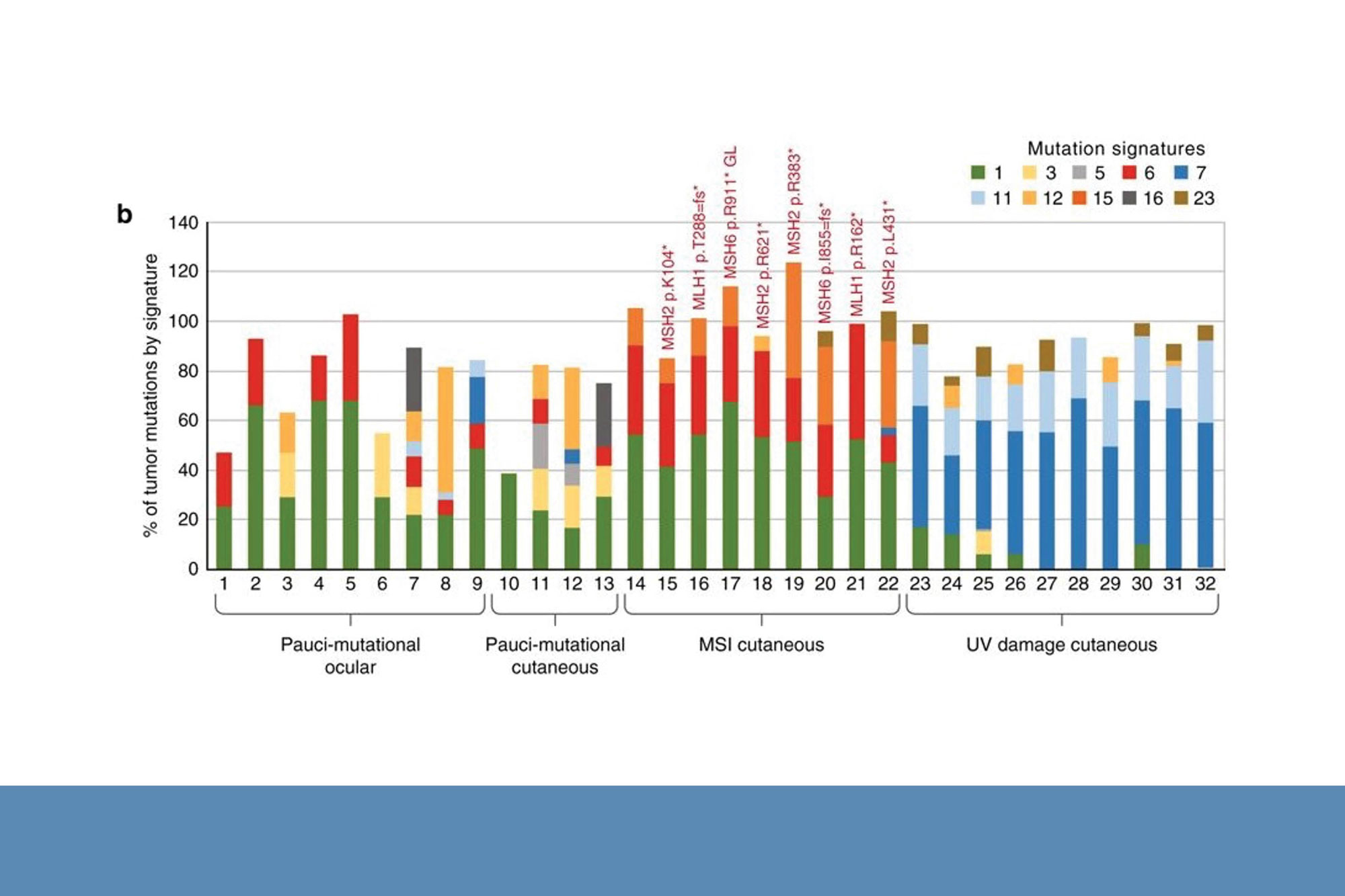New Insights from Genetic Analysis of Cutaneous Adnexal Tumors
Jeffrey North, MD, Managing Director and Associate Professor of Pathology and Dermatology, UCSF
December 2022
Dr. North presented new insights from genetic analysis of cutaneous adnexal tumors.
Dr. North began by asking the audience questions about a hypothetical patient with a sebaceous carcinoma on the eyelid. He asked: “How would you counsel that patient? Are you going to tell them they have a predisposition to other types of adnexal tumors, colon cancer, renal carcinoma, and many other types of cancers, tumors, and malignancies?
There are four primary types of sebaceous tumors: sebaceous hyperplasia (not a neoplasm but hyperplasia of a sebaceous gland), benign sebaceous tumors (adenoma and sebaceoma), and sebaceous carcinoma. Basal cell carcinoma and other adnexal tumors can also have sebaceous differentiation.
Dr. North and his colleague genetically analyzed the mutational burden in 32 sebaceous carcinomas from the eyelid and the skin. These are uncommon, comprising 1% of skin cancers, and frequently involve the eyelid and the skin. They can also be associated with Muir-Torre syndrome, a genetic disease caused by mutation of the genes involved in DNA repair. Interestingly, Dr. North found that the genetic mutations segregated into three groups of mutational signatures based on the level of mutational burden. The groups had distinct histopathologic appearances, confirming the three distinct groups of mutational signatures identified.
Dr. North summarized the current state for diagnosis of sebaceous carcinomas. These are hard to diagnose. There is a lot of varying subjectivity with pathologists calling these neoplasms both adenomas and carcinomas. Dr. North recommended that it might be worth getting a second opinion and using the genetic tumor signatures to help guide whether Muir-Torre screening is needed.


